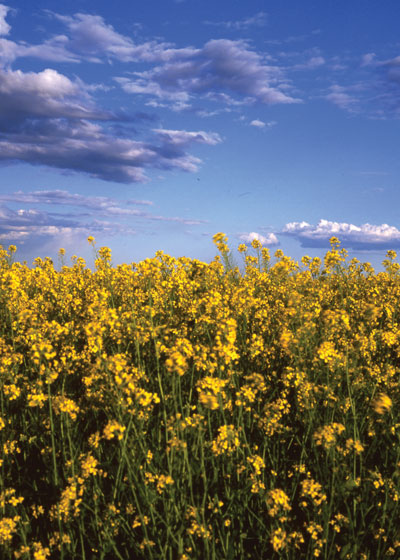
Features
Agronomy
Corn
Maintaining nitrogen effectiveness in high-moisture areas
In northeastern Saskatchewan, where average rainfall can be in the 400mm (16 inch) range, nitrogen loss can be a problem.
February 24, 2009 By Rosalie I. Tennison
In northeastern Saskatchewan, where average rainfall can be in the 400mm (16 inch) range, nitrogen loss can be a problem. With the introduction of controlled release nitrogen products, research was conducted on whether they can be more effective in higher rainfall areas than they are in the drier south. Researchers at Agriculture and Agri-Food Canada undertook a three-year study to determine the effectiveness of controlled release urea in the higher rainfall areas of the north. The study was part of Canada-wide research evaluating the effects of controlled release urea under a wide range of environments.During the three-year period from 2004 to 2006 near Star City, the team of Drs. Sukhdev Singh Malhi, Cynthia Grant and Reynald Lemke developed research to determine if using controlled release products in an area of annual mean precipitation of 425 mm (17 inches) would improve nitrogen efficiency.
 |
|
| Research on canola, wheat and barley shows that controlled release nitrogen can reduce N losses in wet areas. Photo courtesy of Bruce Barker. |
Using a split-plot design, the researchers considered the use of controlled release products under conventional tillage and zero tillage compared to conventional sources of urea under the same tillage practices. As well, placement methods included side band and broadcast. Four rates of nitrogen were used: 0, 30, 60 and 90 kg N/ha (0, 27, 54 and 81 lbs N/ac). Timing of application in the spring and the fall was also considered. “We saw a substantial increase in seed yield when increasing the rate of nitrogen under both conventional and zero tillage,” reports Malhi. “In fact, the seed yields and response rates were similar under both styles of tillage.” He adds the nitrogen use efficiency (kg of seed/kg of applied N) was the highest at the 30 kg N/ha rate, but it did not result in the highest seed yield.The researchers learned that fall-banded urea was less effective in increasing seed yield than spring side-banded urea. But, they believe the effectiveness of the fall-applied urea was improved as a result of using a controlled release product. “We believe this suggests that controlled release urea can be a good fit for winter wheat or other winter crops, where it could allow the nitrogen to be applied more efficiently in the fall,” comments Grant.
In the case of spring application, the coated product produced a higher seed yield than uncoated, which the researchers suggest could lead to producers using the coated product as a replacement for split applications.
The greatest plus for using coated nitrogen products, according to the researchers, is the reduced accumulation of nitrate in the soil at harvest. “We found that by using coated products there was a reduction in nitrate in the top 60 cm (two feet) of soil compared to using uncoated urea,” Malhi says. “This means the potential for nitrogen losses over the winter and early spring is reduced.” As well, Lemke saw some reduction in nitrous oxide (greenhouse gas) emissions.
The researchers believe that under the wetter conditions of the Parkland region of Western Canada, coated urea can effectively enhance seed yield while minimizing gaseous emissions and leaching losses that can occur during the winter months and early spring. “We see using coated products as a benefit both to the environment and crop yield,” Grant comments.
Coated nitrogen products have been available for a number of years, but the cost and understanding of their benefits have held some growers back from using them. With this three-year study completed, research has now proven that in areas with higher moisture, there can be a benefit in both yield and environmental protection. The yield improvement alone could offset the cost of using the product and encourage environmental protection, depending, of course, on the actual cost of the controlled release nitrogen product, value of the crop and the soil-climatic/weather conditions.